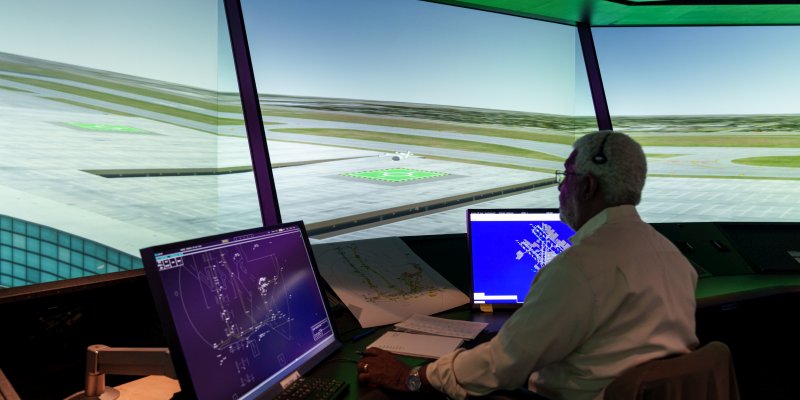Joby Aviation, a company developing electric vertical take-off and landing (eVTOL) aircraft for commercial passenger service, announced it has successfully completed a series of air traffic simulations with NASA’s Ames Research Center that evaluated how air taxi operations can be integrated into today’s airspace, including at busy airports, using existing air traffic control (ATC) tools and procedures.
The simulations, jointly developed by Joby and NASA airspace engineers following a multi-year airspace study, tested scenarios with dozens of eVTOL aircraft per hour flying into and out of the complex, busy airspace in the Dallas-Fort Worth (DFW) region using today’s airspace system.
The activity took place at NASA’s Future Flight Central, a high-fidelity virtual tower facility offering a 360-degree view of a real-time simulation of an airport, where a team of NASA and Joby engineers, as well as pilots and air traffic controllers, simulated traffic patterns at Dallas Love Field (DAL) and DFW airports, representative of complex and busy airspace.
During the simulation, participating teams of controllers virtually tested the ability to integrate up to 120 eVTOL operations – arrivals or departures – per hour from DFW’s Central Terminal Area, alongside the airport’s existing traffic. Up to 45 simulated eVTOL aircraft were simultaneously aloft in DFW’s Class B airspace during the activity.
“These successful simulations were made possible by years of careful planning and collaboration between two organizations committed to redefining what is possible, and we’re proud to be paving the way towards the scaled commercialization of air taxis in the National Airspace System”, said Tom Prevot, Air Taxi Product Lead at Joby.
NASA and Joby engineers hosted representatives from the FAA and the National Air Traffic Controllers Association (NATCA) to observe the simulation.

